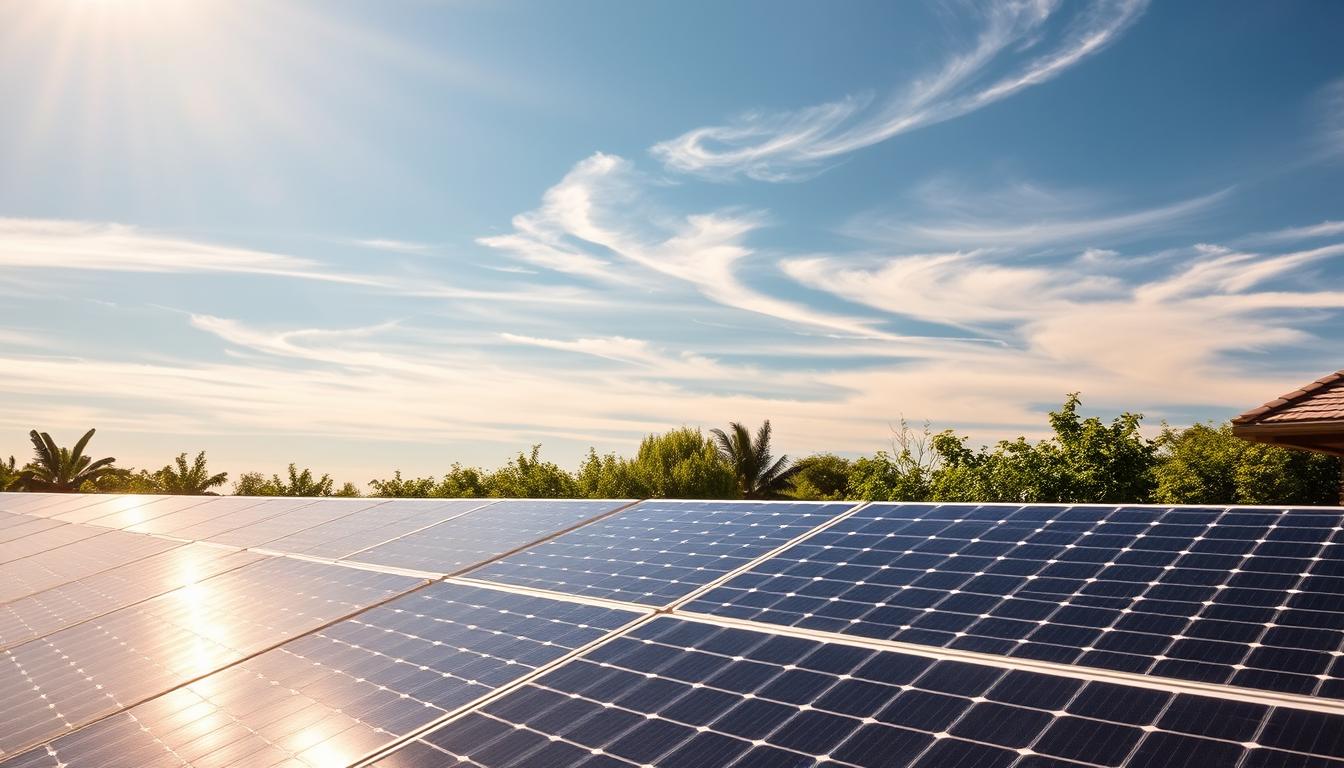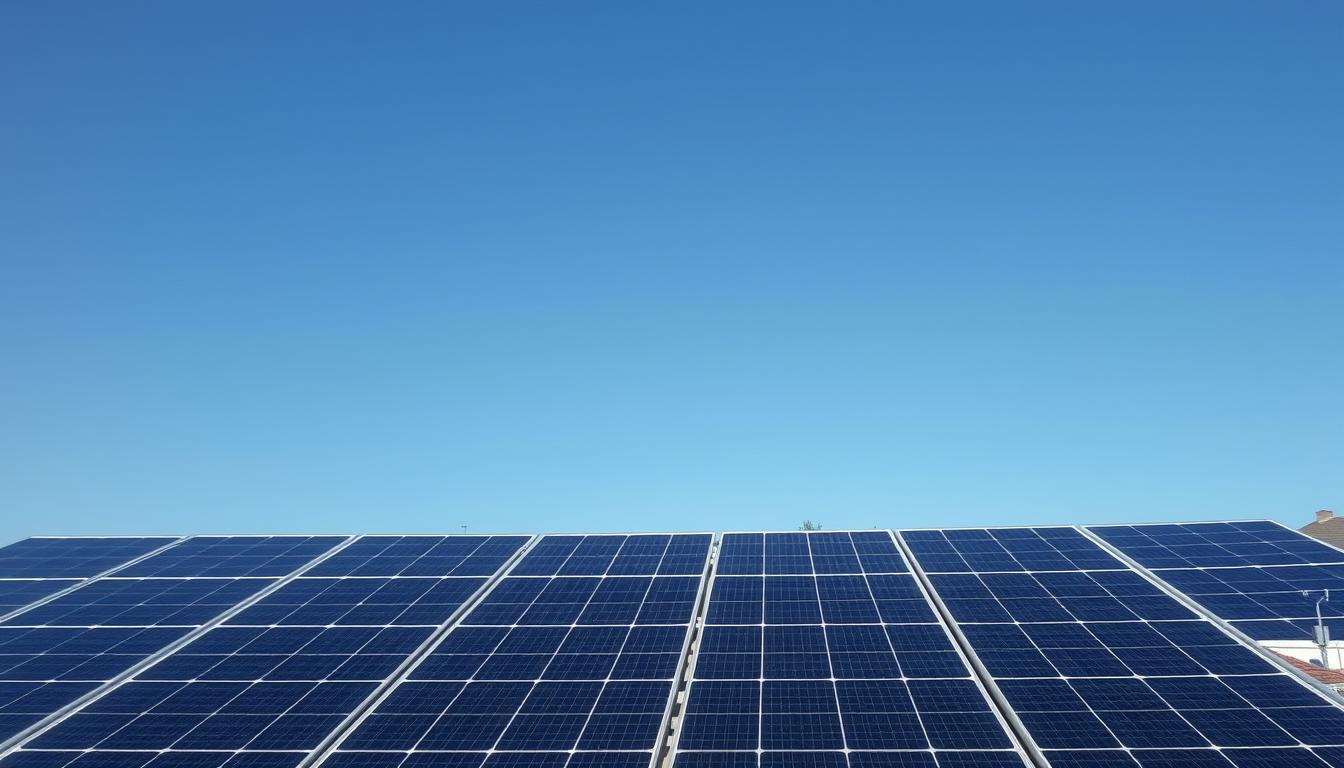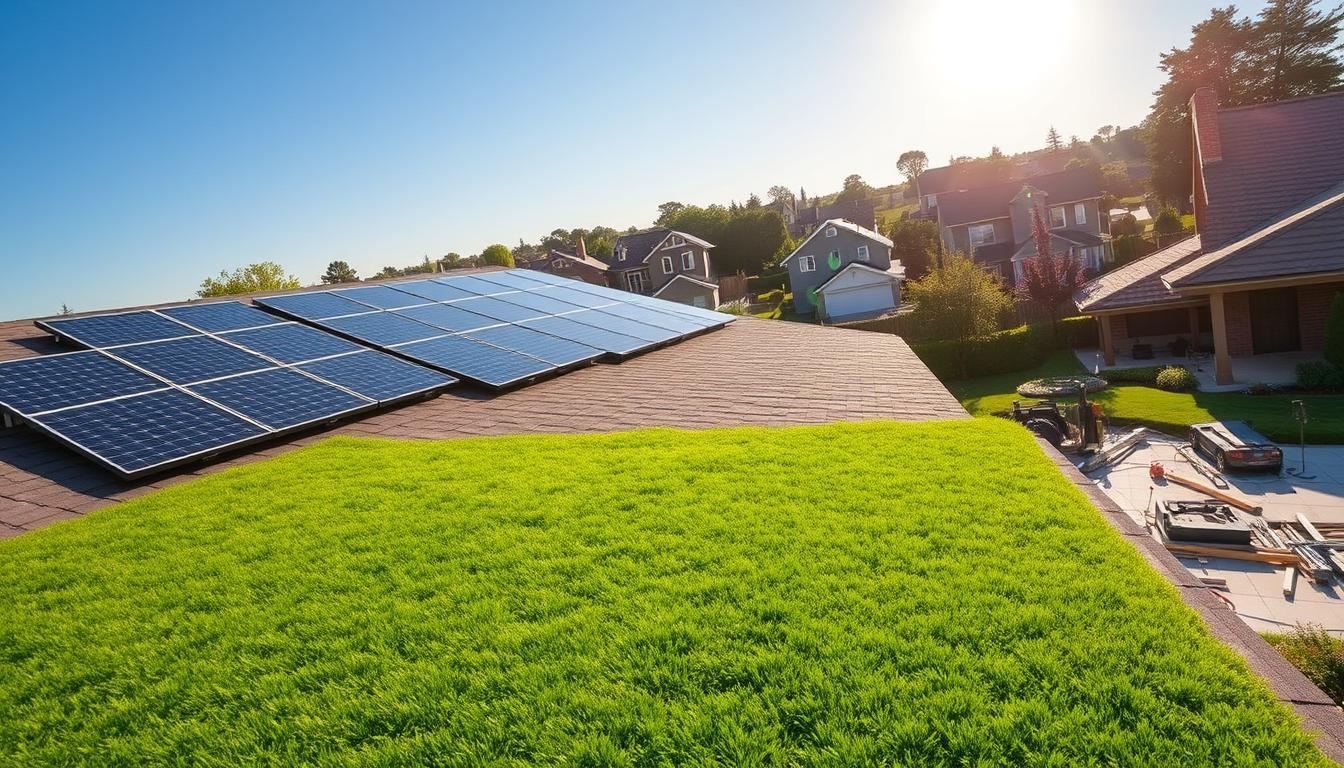Imagine creating a warm and inviting ambiance in your backyard with the soft glow of solar path lighting. In this article, discover the simple and rewarding steps to DIY your own solar path lighting. From selecting the perfect location to installing the solar lights and adding your personal touch, you will find all the guidance you need to bring this sustainable and stylish addition to your outdoor space. Get ready to illuminate your pathways with eco-friendly charm!
Materials Needed
To successfully install solar path lights, you will need the following materials:
Solar path lights
Solar path lights are the key component of this project. Choose lights that are durable, weatherproof, and have a suitable design for your path.
Rechargeable batteries
Most solar path lights come with rechargeable batteries. These batteries store energy from the sun during the day and power the lights at night.
Solar panel
The solar panel is responsible for converting sunlight into energy. Make sure the panel you choose is compatible with the batteries and lights you have.
Mounting brackets
Mounting brackets are used to attach the lights and the solar panel to the desired surface. Make sure the brackets are sturdy and suitable for outdoor use.
Wire connectors
Wire connectors are necessary to join different wires together securely. They ensure a reliable electrical connection between components.
Wire strippers
Wire strippers are essential for removing the insulation from the wires in order to make connections.
Drill
A drill will be needed to create holes for mounting the brackets and wires.
Screwdriver
A screwdriver is necessary for attaching the mounting brackets and securing the lights and solar panel.
Pliers
Pliers will be useful for twisting and crimping wire connectors.
Marker or pencil
A marker or pencil is needed for marking positions and measurements during installation.
Measuring tape
A measuring tape is essential for accurately determining the spacing and positioning of the lights.
Saw or pipe cutter
A saw or pipe cutter may be required to cut any pipes or poles for mounting the solar panel.
Choose a Suitable Location
Choosing a suitable location is crucial for maximizing the effectiveness of your solar path lights. Consider the following factors:
Assess the sunlight availability
Solar path lights rely on sunlight to generate energy. Ensure that the chosen location receives adequate sunlight throughout the day. Avoid areas shaded by trees, buildings, or other obstructions.
Consider the path layout and design
Take into consideration the layout and design of your path when deciding where to install the lights. Place the lights in a way that enhances the visual appeal and guides people safely along the path.
Determine the optimal spacing between lights
Proper spacing between lights is important for achieving a well-lit path. Too close, and the lights may create a cluttered look; too far apart, and the path may not be adequately illuminated. Use your measuring tape to determine the optimal spacing for your specific lights.
Clean and prepare the installation area
Before installation, clean the area where the lights will be installed. Remove any debris, vegetation, or obstacles that may interfere with the installation process or reduce the effectiveness of the lights.
Plan the Wiring Configuration
Proper planning of the wiring configuration is essential for a successful installation. Consider the following steps:
Decide on the series or parallel connection
You can choose to connect your solar path lights in either a series or parallel configuration. A series connection requires a continuous path for the electrical current, while a parallel connection allows each light to function independently. Consider the specific requirements of your lights and your overall design plan when deciding on the optimal wiring configuration.
Calculate the wire length needed
Measure the distance between each light and the solar panel to determine the length of wire needed for your installation. It is better to have extra wire length than not enough, as this will allow flexibility during installation.
Choose the wire gauge
Select a wire gauge that is suitable for your installation. Consult the manufacturer’s recommendations for your solar path lights and take into account the lengths of wire you will be using. Thicker wires are generally better for minimizing voltage drop and improving the efficiency of the lights.
Identify the positions for interconnecting wires
Plan and mark the positions where you will be connecting the wires between the lights and the solar panel. This will help ensure a smooth and organized installation process.
Prepare the Solar Lights
Before installation, it is important to properly prepare the solar lights. Follow these steps:
Remove any packaging and protective coverings
Carefully remove any packaging or protective coverings from the lights. Be sure to read the instructions provided by the manufacturer to avoid damaging the lights during this process.
Inspect the lights for any visible damage
Thoroughly inspect the lights for any visible damage. Check for cracks, loose components, or any other issues that may affect their performance. If you notice any damage, contact the manufacturer for assistance or consider replacing the lights.
Check if the batteries are included and charged
Ensure that the lights come with the appropriate rechargeable batteries and that they are fully charged. This will ensure that your lights are ready to illuminate your path from the moment they are installed.
Test the lights before installation
Before proceeding with the installation, test the lights to ensure they are functioning properly. Place them in an area where they can receive sunlight and turn them on. Check if they produce the desired brightness and if they automatically turn on when it gets dark. If any issues are detected, contact the manufacturer for troubleshooting assistance.
Install the Solar Lights
Now it’s time to install the solar lights. Follow these steps:
Attach the mounting brackets to the lights
Using the appropriate tools, attach the mounting brackets to the lights as instructed by the manufacturer. Ensure that they are securely fastened to support the weight of the lights.
Position the lights according to the plan
Refer to your plan and place the lights in their designated positions. Take care to align them properly and ensure they are facing the desired direction.
Secure the lights using screws or stakes
Secure the lights in place using the provided screws or stakes, depending on the type of mounting brackets you have. Make sure the lights are firmly anchored and won’t be easily dislodged or knocked over.
Connect the interconnecting wires
Using wire connectors, join the interconnecting wires according to your planned wiring configuration. Strip the ends of the wires if necessary and ensure a secure connection. Double-check that the connections are properly aligned and securely fastened to prevent any issues with the lighting.
Bury or conceal the wires in the ground
To maintain a neat and visually appealing installation, bury or conceal the wires in the ground. Use a shovel or a suitable tool to create a trench that will allow the wires to be covered. Take care to avoid damaging the wires during this process.
Install the Solar Panel
Once the lights are installed, it’s time to install the solar panel. Follow these steps:
Choose an ideal location with maximum sunlight exposure
Select a location for the solar panel that receives the most direct sunlight exposure throughout the day. Position it in an area free from any shading to ensure optimal performance.
Attach the mounting brackets or supports for the solar panel
Using the appropriate tools, attach the mounting brackets or supports to the solar panel as instructed by the manufacturer. Make sure they are securely fastened, as the solar panel will be exposed to various weather conditions.
Connect the solar panel to the battery housing
Refer to the manufacturer’s instructions and connect the solar panel to the battery housing. Ensure that all connections are properly aligned and securely fastened.
Position and secure the solar panel on the supports
Place the solar panel on the supports and adjust its position to face the sun directly. Secure the panel in place using the provided screws or clamps. Double-check that the panel is firmly attached and won’t be easily dislodged by wind or other external factors.
Connect the Wiring
Properly connecting the wiring is crucial for the functionality of your solar path lights. Follow these steps:
Strip the ends of the interconnecting wires
Using wire strippers, carefully remove the insulation from the ends of the interconnecting wires. Take care not to damage the wires themselves.
Connect the wires using wire connectors
Following the manufacturer’s instructions, use wire connectors to join the stripped ends of the wires together. Twist the wires together and secure them tightly using the connectors.
Ensure proper polarity for a series connection
If you have chosen a series connection for your solar path lights, ensure that the polarity is correct. Positive wires should be connected to positive terminals, and negative wires should be connected to negative terminals. Reversing the polarity may result in the lights not working properly or even causing damage to the components.
Use a wire stripper or pliers to crimp the connectors
After making the necessary connections, use a wire stripper or pliers to crimp the connectors. This will further secure the connection and ensure a reliable electrical connection between the wires.
Test and Adjust the Lighting
After the installation and wiring are complete, it’s important to test and adjust the lighting for optimal performance. Follow these steps:
Turn on the solar path lights and monitor their performance
Turn on the solar path lights and observe their performance. Check if all the lights are functioning properly and providing the desired brightness. If any issues are detected, refer to the troubleshooting section or contact the manufacturer for assistance.
Observe the brightness and duration of the lights
Pay attention to the brightness and duration of the lights throughout the night. Make note of any discrepancies or areas where the lighting may be insufficient. This will help you identify any adjustments or improvements that may be needed.
Make adjustments to the positioning or angles if necessary
If you notice any areas with inadequate lighting, consider adjusting the positioning or angles of the lights. This may involve repositioning the lights or tilting them slightly to achieve better coverage. Take your time to find the optimal lighting configuration for your specific path and design.
Maintain and Troubleshoot
To ensure the longevity and efficiency of your solar path lights, regular maintenance and troubleshooting may be required. Follow these steps:
Clean the solar panel regularly to remove dirt or debris
Dirt or debris on the solar panel can reduce its efficiency. Periodically clean the panel using a soft cloth or sponge and a mild detergent solution. Avoid using abrasive materials that may scratch the surface. Regular cleaning will ensure maximum sunlight absorption and optimal performance.
Check the battery and replace if necessary
Over time, the rechargeable batteries in your solar path lights may lose their ability to hold a charge. Periodically check the batteries and replace them if they are no longer functioning properly. Consider using high-quality, long-lasting batteries for optimal performance.
Inspect the wiring for any damage or loose connections
Regularly inspect the wiring connections for any damage or loose connections. Check the wire insulation, connectors, and connections for signs of wear or corrosion. Repair or replace any damaged components to ensure continued functionality.
Replace any faulty or dim lights
If you notice any lights that are consistently dim or not functioning properly, replace them as soon as possible. Faulty lights can affect the overall aesthetic and functionality of your path lighting. Refer to the manufacturer’s instructions for the appropriate replacement process.
Enhancements and Personalization
Once you have installed and tested your solar path lights, you may want to consider enhancements and personalization options. Here are a few ideas to explore:
Consider adding timers or motion sensors
To further control the operation of your solar path lights, consider adding timers or motion sensors. Timers can be set to turn the lights on and off at specific times, while motion sensors can activate the lights when someone approaches the path.
Use different light colors or designs
If you want to add a touch of personalization, consider using solar path lights with different light colors or designs. This can create a unique and visually appealing effect along your path.
Incorporate decorative elements around the lights
To enhance the overall ambiance of your path, incorporate decorative elements around the lights. This could include plants, statues, or other outdoor décor that aligns with your personal style.
Experiment with different types of solar path lights
Solar path lights come in various shapes, sizes, and designs. Don’t be afraid to experiment with different types to find the ones that best suit your path and personal taste. Consider factors such as brightness, style, and durability when selecting new lights.
By following these comprehensive steps, you will be able to successfully install solar path lights and create a visually appealing and well-lit path. Enjoy the benefits of sustainable lighting while enhancing the beauty and safety of your outdoor space. Happy installing!










